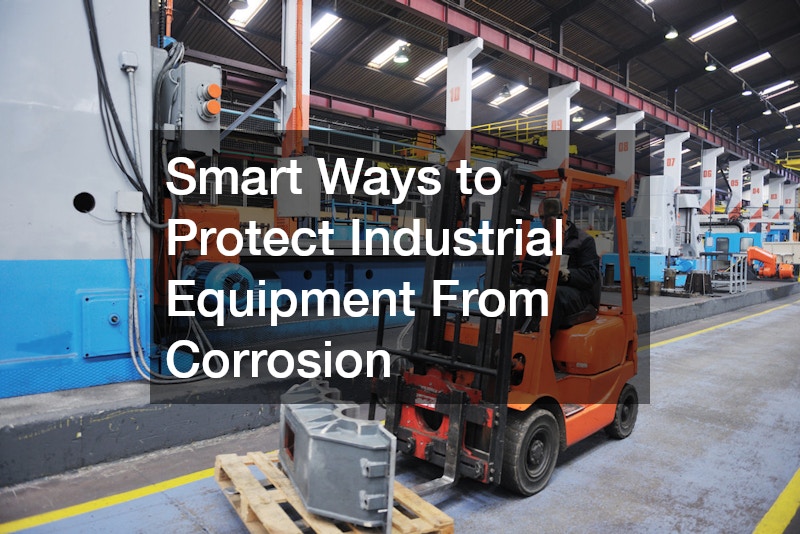The world of metal fabrication is undergoing a transformation, driven by rapid technological advancements, growing global demand and the pressing need for sustainable solutions. As industries evolve and markets shift, metal fabrication must keep pace by embracing innovation and efficiency.
This sector has long been a cornerstone of construction, manufacturing, automotive and aerospace industries, but the coming years promise even greater integration of cutting-edge tools, digital processes and sustainable practices. With a focus on quality, precision and adaptability, the future of metal fabrication is being shaped by several pivotal trends that will redefine its role in the modern industrial landscape.
Digitalisation & Smart Manufacturing
One of the most significant changes in metal fabrication is the rise of digitalisation. The integration of Industry 4.0 principles into fabrication shops has enabled smarter, more automated production processes. Technologies such as the Internet of Things (IoT), cloud-based data platforms and artificial intelligence (AI) are enabling manufacturers to streamline operations, reduce waste and predict maintenance needs before they become costly issues.
Computer-aided design (CAD) and computer-aided manufacturing (CAM) have already revolutionised how components are designed and produced, but the increasing use of digital twins—virtual replicas of physical systems—is taking precision and efficiency to new levels. Fabricators can now simulate every aspect of a component’s lifecycle before it is manufactured, reducing trial-and-error processes and ensuring optimal performance. As a result, metal fabrication is becoming more agile, data-driven and responsive to real-time demand.
Advanced Robotics & Automation
Automation has always played a role in heavy industry, but recent developments in robotics have made it more accessible and flexible for metal fabrication processes. Collaborative robots (cobots), for instance, can safely work alongside humans, handling repetitive or hazardous tasks with consistent precision. This not only improves safety on the workshop floor but also boosts productivity by allowing human workers to focus on more complex or creative aspects of the job.
Modern robotic welding and cutting systems are now capable of operating with minimal supervision, thanks to sophisticated sensors and machine learning algorithms. As costs decrease and capabilities expand, the adoption of robotics in fabrication is expected to become standard across workshops of all sizes, leading to faster turnaround times and improved product quality.
Sustainable & Eco-Friendly Practices
Sustainability is no longer a fringe concern—it has become a key driver in how industries operate and metal fabrication is no exception. Customers and governments alike are demanding greener processes and products, prompting fabricators to adopt more environmentally conscious practices. This includes recycling scrap metal, using energy-efficient machinery and reducing harmful emissions during production.
New fabrication methods are also emerging that align with sustainability goals. Laser and plasma cutting technologies, for example, offer more precise cuts with less material waste. Waterjet cutting, which uses high-pressure water mixed with abrasive particles, produces no heat and minimises environmental impact. Moreover, manufacturers are exploring alternative materials and alloys that offer strength and durability while being easier to recycle or requiring less energy to process.
In addition, digitalisation supports sustainability by enabling better resource management. These steps not only reduce a company’s carbon footprint but also lower operational costs—making sustainability both an ethical and economic imperative in modern metal fabrication.
Customisation & On-Demand Manufacturing
Consumer expectations are evolving and the era of mass production is making way for a more customised approach. This shift is influencing metal fabrication, as clients demand tailored components that meet specific requirements—whether in terms of size, shape or function. Advances in 3D modelling and automated production are enabling fabricators to meet this demand with greater speed and precision.
Additive manufacturing, commonly known as 3D printing, is becoming a powerful tool in the metal fabrication industry. While traditionally used for prototyping, metal 3D printing is now capable of producing fully functional components with complex geometries that would be difficult or impossible to achieve using conventional methods. This opens new opportunities for bespoke fabrication, particularly in sectors like aerospace, medical devices and automotive parts where every millimetre matters.
Workforce Development & Skills Evolution
As the technology landscape evolves, so too must the workforce behind metal fabrication. The future of the industry depends heavily on skilled professionals who can operate advanced machinery, interpret data and manage digital workflows. This shift is prompting a reevaluation of traditional training programs and the introduction of new learning pathways.
Vocational training institutions and universities are expanding their curriculums to include digital literacy, robotics and materials science. In-house training is also being prioritised to upskill current employees, ensuring they remain relevant in a changing industry. Importantly, the adoption of modern technologies is not replacing human workers—it is changing the nature of their roles. Instead of performing manual labour, workers are increasingly overseeing systems, interpreting analytics and making strategic decisions.
Shaping the Next Era of Fabrication
The metal fabrication industry stands at a pivotal crossroads, where tradition meets innovation. The incorporation of digital tools, smart automation, sustainable practices and a focus on customisation is setting the stage for a more dynamic and efficient future. While challenges remain—such as workforce development and cost barriers—the direction of progress is clear. Fabricators who embrace these changes will be well-positioned to lead in the next industrial revolution.
With metal fabrication becoming more intelligent, environmentally responsible and responsive to individual client needs, its future is both exciting and full of potential. As technologies continue to evolve and new trends emerge, this industry will remain a vital part of global progress—reshaping not only how we build but how we think about innovation in manufacturing.
.




Post Comment